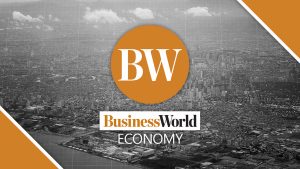TAXES collected from marked fuel products amounted to P453.43 billion as of mid-June, counting back to when the program started in September 2019, the Department of Finance said.
This total includes P423.615 billion from customs duties as of June 16, and P29.81 billion in excise taxes collected as of Oct. 28, 2021, according to Finance Secretary Carlos G. Dominguez III in a Viber message.
The volume of marked fuel totaled 43.048 billion liters as of June 17.
Luzon accounted for nearly 74% of all marked fuel, or 31.8 billion liters, followed by Mindanao at roughly 20%, or 8.8 billion liters. The Visayas accounted for 5.4% of the total at 2.3 billion liters.
Diesel made up the bulk of marked fuel at 60.65%, while gasoline and kerosene consisted of 38.85% and 0.51%, respectively.
Twenty-eight oil companies are currently participating in the government’s fuel marking program.
Petron Corp. accounted for 10.46 billion liters or marked fuel, or 24.31% of the total, followed by Pilipinas Shell Petroleum Corp. at 7.69 billion liters or 17.86%.
Unioil Petroleum Philippines, Inc. came in at 4.47 billion liters of marked fuel, while Insular Oil Corp. and Seaoil Philippines, Inc. posted 3.71 billion and 3.57 billion, respectively.
The fuel marking program started on Sept. 4, 2019. Fuel is marked with a special dye in order to signify tax compliance, while the absence of the dye is considered an indication that the fuel may be smuggled. The program is authorized by Republic Act 10963, or the Tax Reform for Acceleration and Inclusion (TRAIN) law.
Last year, P158.44 billion was collected via duties. In 2022 so far, collections have totaled P154.40 billion, while the volume of marked fuel for the period was 12.97 billion liters.
Mr. Dominguez has said that the government expects to collect P147.1 billion in fuel excise tax and VAT in 2022.
In its 2021 Annual Report, the Bureau of Customs said it seized P6.7 billion worth of smuggled fuel and oil. — Tobias Jared Tomas
